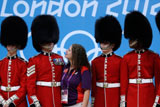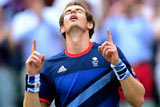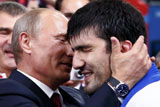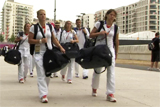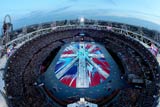Cycling - Road
Updated: 2012-05-14 16:37:40
(london2012.com)
|
|||||||||||
At London 2012, a quartet of challenging, exciting Road Cycling events will energise the streets of London and Surrey.
According to popular legend, the first ever bicycle race was held in Paris in 1868 and was won by a 19-year-old cyclist from Suffolk named James Moore. It goes without saying that the sport has grown since these humble beginnings. More than 140 years after Moore’s triumph, Road Cycling events draw huge crowds and enormous TV audiences around the world. The four Olympic medal events at London 2012 should see the streets of London and Surrey packed with passionate fans. They are likely to be among the largest road cycling events of all time.
 |
Competition dates
July 28, 29, and Aug 1
Competition venue
The Mall (Road Race)
Hampton Court Palace (Time Trial)
Number of medal events
Four: men’s and women’s Road Race; men’s and women’s Time Trial.
Number of competitors
212 (145 men and 67 women). Each country is limited to five men and four women, including a maximum of two men and two women for the Time Trials.
Field of play
The Road Race course is 250km for men, 140km for women. The Time Trial course is 44km for men, and 29km for women.
History of Road Cycling at the Olympic Games
Road Cycling featured at the first modern Olympic Games in 1896, with an 87km race that started and finished in Athens. There was no Road Cycling event at the next three Games, but the discipline was reintroduced in 1912 and has been a permanent part of the Olympic programme ever since. Women have been competing since the Los Angeles 1984 Games.
The basics
The Olympic programme includes two Road Cycling events for both men and women. For the Road Race all competitors start together; the first rider to cross the finish line wins gold. For the shorter Time Trial, the riders start at 90-second intervals and the winner is the rider with the fastest time over the course.
Great stamina, astute strategy and powerful acceleration are essential to success in both events, with teamwork also playing a big part in the Road Races.
Competition format
The men's and women's Road Race is a straight final. In each event all athletes start together, and the first to cross the finish line is the winner. In the Time Trials, athletes start at 90-second intervals and the one to complete the course in the fastest time is the winner.
The Road Race course The Road Race starts on The Mall before the riders head south-west through the city. They then cross the River Thames at Putney Bridge and continue out through Richmond Park, Bushy Park and past Hampton Court Palace.
The Surrey section of the course incorporates several circuits of a challenging loop around Box Hill (nine for the men’s Road Race, two loops for the women’s), before the riders head north through Leatherhead, Esher, Kingston-upon-Thames, Richmond Park and back to The Mall for a dramatic finish.
The Time Trial course The Time Trial starts and finishes at Hampton Court Palace in south-west London, and incorporates sections of Richmond, Kingston-upon-Thames and Surrey. Both events are held over a single lap, with slight variations in the men’s and women’s courses reflecting the different distances.
Officials
Events are officiated by the panel of race commissaires. There will be a race convoy of more than 100 vehicles out on the course during the Cycling Road Races.
Keys to success
Road Cycling events are extremely tactical. As well as the immense strength and stamina athletes need to complete the course, the winning athletes are those who have judged their pace and positioning to the smallest detail.
Breaking the rules
Without the great reserves of stamina required, especially in the Road Race, riders will get left out of any breakaway groups and be left back with the main pack. Races can also be crowded in places – bumps and crashes are not uncommon, and athletes need to stay alert to keep out of trouble.
Jargon buster
Breakaway – a rider or group of riders that has left the main group behind.
Lead-out – a rider who sacrifices his chances for the benefit of his team leader at the end of a Road Race.
Peloton – the main group of riders.
Medal Count |
||||
| 1 | 46 | 29 | 29 | |
| 2 | 38 | 27 | 22 | |
| 3 | 29 | 17 | 19 | |
| 4 | 24 | 25 | 33 | |
| 5 | 13 | 8 | 7 | |
| 6 | 11 | 19 | 14 | |


